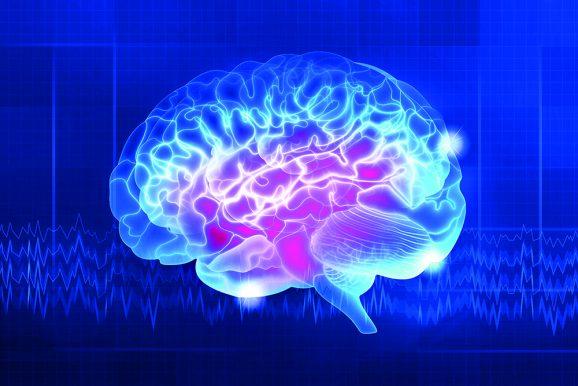Navigating the neuroscience of workplace stress

The confluence of psychology, neuroscience, and technology offers a real opportunity to understand stress – one that should not be missed, says Maxted Neal of Hult International Business School
What if we could see stress? Not in the way one would imagine – furrowed brows, tense expressions, or frowning mouths – but the hidden physiological signals, the ones that dictate your mood, your energy levels, and ultimately your performance. The modern business landscape is dominated by data, so why not use data to decode one of the workplace’s most intangible challenges: stress?
Beneath the calm exterior of a seasoned manager may lie a storm of stress. But what if they could tap into that storm, understand it, and harness it for good? Enter the new frontier of physiological feedback.
The concept of stress in the workplace is by no means a new one. Diagnoses of stress related conditions date back to the 1800s, when neurologist George M Beard attributed cases of “neurasthenia” – a condition with symptoms like depression, anxiety, fatigue, headaches, and even impotence – to exhaustion of the central nervous system. Beard blamed this exhaustion on an increasingly urbanised way of life and increasingly competitive business environment. And whilst neurasthenia headaches are no longer a serious diagnosis for modern psychologists, stress is still a very serious headache for modern businesses – and we are no closer to eradicating the problem.
Stress can be costly. In fact, the shadow of stress looms large over the economic fortunes of organisations across the world. The University of Massachusetts estimates $300bn is lost annually by American companies due to job-related stress. An analysis of insurance data in the Harvard Business Review found that stress-related industrial accidents cost double those of non-stress-related industrial accidents. In the era of the Great Resignation, where organisations spend up to 200% of salary to replace an employee, allowing 40% of turnover to be caused by workplace stress is unacceptable to the bottom-line of any company.
Tackling the intangibles
The problem with stress is that, like many other psychological concepts, we all have an intuitive idea of what stress is, but it’s hard to define, measure, and track. What we do know, however, is that stress and pressure negatively affects our performance. The psychologist Hendrie Weisinger pointed out that even the most famous “clutch” basketball player Michael Jordan’s free-throw success percentage in the dying moments of games was considerably worse than in regular, less pressured, earlier moments in games. Theresa Amabile, Harvard Business School professor of entrepreneurship, conducted research on creativity and pressure, working with over 12,000 employees over ten years. She found that when people were placed under increasing amounts of pressure, their perceptions of how creative they were also increased – but when their output was objectively assessed, creativity actually decreased under pressure. So why do we believe this? Why do we think we perform better under pressure despite objective evidence offering a contradictory narrative? Weisinger chalks this up to the stories that we tell ourselves. We remember Michael Jordan’s magic moments, the last-minute three-pointers to win the game, not the many more times he missed. When it comes to our own performance, we make the critical mistake of conflating the effort we have expended with the quality of our performance. Why? The answer can be found in the psychology and neuroscience of stress.

Identifying challenges and threats
At its heart, stress as we know and understand it, is the function of two key systems in the brain and the body. One is the sympathetic-adreno-medullar (SAM) axis, and the other is the hypothalamic-pituitary-adrenal (HPA) axis. These systems regulate a number of key bodily functions, from vasodilation and constriction, cardiac output, heart rate, hormone and neurotransmitter release. When we experience the negative consequences of stress, we tend to see more SAM activation, alongside the release of cortisol, avoidant behaviours towards the stressor, and impairment of our cognitive functions amongst other negative consequences. However, an individual could experience the same stressors and instead see more HPA activation, alongside the release of adrenaline, engagement with the stressor, and improved decision making.
Professor Marc Jones, a neuroscientist at Manchester Metropolitan University, attributes these different types of activity to our perception of a stressor as either a challenge or a threat. Which one we perceive is determined by our levels of resources, such as energy levels, time, and our perceived ability levels, versus how much of a demand we think the stressor is. If our levels of resources outweigh how much of demand the stressor is, we enter a challenge state, and vice versa.
The key to beating the negative effects of workplace stress is to change these appraisals of resources and demands. This can be achieved in two ways: either by reducing our perceived levels of demands or increasing the availability of resources. But herein lies the issue – these are abstract psychological concepts – how can we assess physiological activity without putting leaders in laboratories? We need real-world, day-to-day data on how individuals were performing physiologically. This is completely routine in the world of sport, with established benchmarks and baselines, but could this ever work in the business world?
At Hult International Business School, we set out to do just that. Understand exactly how individuals respond to pressure and stress at a deep, physiological level. We conducted research in which we put senior leaders under different types of pressure using actors, simulating as best we could the pressures of the modern business leader’s day-to-day working life. Crucially, we monitored biomarkers throughout this process through a two-lead ECG with some additional sensors to take research-grade equipment out of the lab and into the boardroom. The results were fascinating – we were able to track, down to the minute, exactly how leaders were responding at a physiological level.
More importantly, we could track the overall balance of demands and resources, by pooling a number of critical biomarkers. We have, over the last ten years, carried out tens of thousands of assessments on individuals ranging from CEOs to undergraduate business students. We identify the biggest opportunities to improve performance from the smallest lifestyle changes.
An example of this was found in a C-suite employee in their first 100 days at a major international airline. She described feeling tired all the time, not at her sharpest mentally, and anxious – especially during meetings. When we assessed her, we noticed that stress activity spiked not during meetings – but in the 15 to 30 minutes immediately preceding a meeting. The source of the stress was not a lack of resources – but an unconscious perception of the impending meeting as a threat – triggering a cascade of negative stress responses, resulting in the negative performance and wellbeing impacts. We worked together to address this perception and re-assessed after a month. The stress spikes were gone, the executive felt better and far more capable.
Piecing the clues together
Stress, while intangible to the naked eye, wields immense power over our mental faculties, performance, and organisational health. In an era where every detail is scrutinised under the analytical lens of data, the unseen storm of stress remains a puzzling enigma. Within every heartbeat and adrenal response lies a story, a clue to our individual and collective success. While technology now grants us the power to see these hidden ripples within our physiology, it remains incumbent upon businesses to integrate this understanding. The confluence of psychology, neuroscience, and technology offers an unprecedented opportunity. Don’t wait for the next economic report highlighting stress-induced losses, or your next high potential to quit from burnout. The realm of physiological feedback is knocking at the door of the modern business. Open it.
About the Author

Maxted Neal is Professor of Practice and Senior Director of Student Development at Hult International Business School in London.














